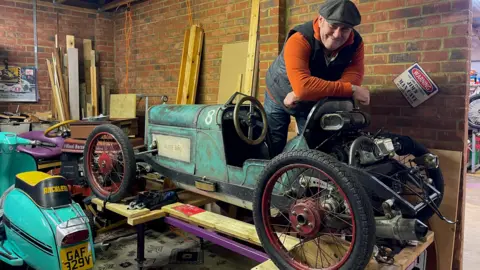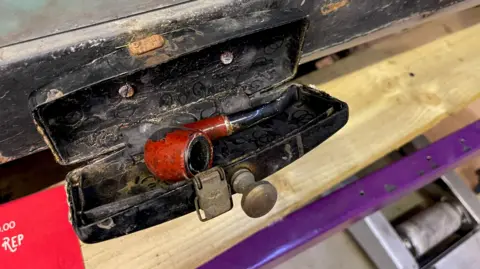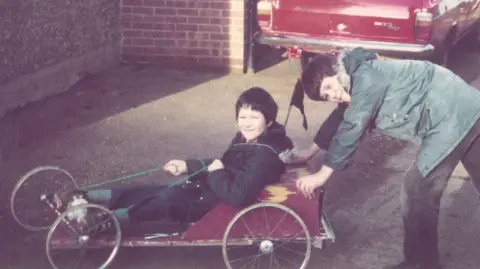DIY race karts 'affordable' way into motorsport
 Charlotte Vowden/BBC
Charlotte Vowden/BBCHomemade race karts, known as cyclekarts, are an "affordable and fun" way to get into motorsport, according to a racing enthusiast.
The single-seater vehicles, which sit on motorcycle wheels, feature upcycled components and are powered by 200cc engines often used in cement mixers.
Jim Tanner, an engineer and motorsport fan from Rushden, spent £650 building his cyclekart.
"The cost is very low really, certainly in motorsport terms," he said.
 Charlotte Vowden/BBC
Charlotte Vowden/BBC"I'm of the make do and mend generation, and most of my cyclekart is made from bits I've found in charity shops or lying around my workshop," he said.
Cyclekarts GB, a club set up by enthusiasts to share advice and technical support, has established certain regulations that must be met to qualify as a cyclekart.
Wheels must be a certain size and there can only be small engine modifications to improve performance.
Typically, a cyclekart's bodywork is made from a combination of metal, wood and fibreglass.
"One of the great things about cyclekarting is that you learn new skills and that makes it a lot of fun to build one yourself," he said.
 Charlotte Vowden/BBC
Charlotte Vowden/BBCOn a private race track, cyclekarts can reach speeds of around 45mph (72km/h).
"It's a real buzz, but you have to have a very firm grip on the steering wheel, it's very twitchy," he said.
"As soon as that flag drops, all I can think about is trying to get out in front."
Races take place on tarmac circuits, in fields and on beaches.
"Everyone is very respectful because everyone has built these cars in their sheds at home.
"Nobody wants to crash them, its a lot of work, so we always give each other enough space and no one is out to cut anybody up, it doesn't happen."
 Jim Tanner
Jim TannerAs a child, he was inspired to build his first go-kart by a "Bugsy Malone-esque" car he had seen on an episode of Blue Peter.
His current cyclekart is inspired by a 1935 Dodge Baquet.
It includes a broken shower dial used as a centrepiece for the steering wheel, a tea light holder as a rear light surround, and a welding mask as the radiator surround. Paper fasteners hold the bucket seat's upholstery in place and an old glasses case stores his smoking pipe.
"One chap, his wife has got barely any kitchen utensils left because they're now bolted to his cyclekart," he added.
"The next thing you know you've got no saucepans."
